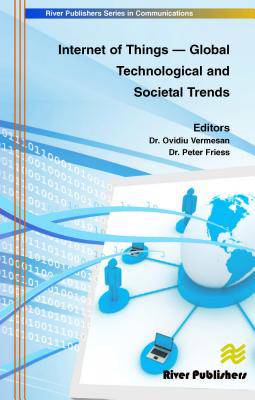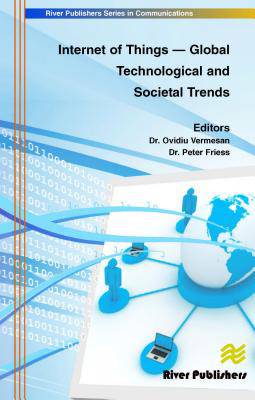
- Retrait gratuit dans votre magasin Club
- 7.000.000 titres dans notre catalogue
- Payer en toute sécurité
- Toujours un magasin près de chez vous
- Retrait gratuit dans votre magasin Club
- 7.000.0000 titres dans notre catalogue
- Payer en toute sécurité
- Toujours un magasin près de chez vous
Internet of Things - Global Technological and Societal Trends from Smart Environments and Spaces to Green Ict
Global Technological and Societal Trends from Smart Environments and Spaces to Green Ict
174,95 €
+ 349 points
Description
The book's aim is to define the Internet of Things (IoT) in a global view, present the research agenda for Internet of Things technologies by addressing the new technological developments and providing a global balanced coverage of the challenges and the technical and industrial trends. Energy consumption by the data, communication and networking devices and global CO2 emission is increasing exponentially. ICT has a dual role in this process: it accounts for about two percent of global CO2 emissions and at the same the ICT including IoT technologies and applications have a direct effect on lowering CO2 emissions, increasing energy efficiency, reducing power consumption, and achieving efficient waste recycling. The book builds on the ideas put forward by the European research Cluster on the Internet of Things Strategic Research Agenda and presents global views and state of the art results on the challenges facing the research, development and deployment of IoT at the global level. IoT together with the other emerging Internet developments such as Internet of Energy, Media, People, Services, Business/Enterprises are the backbone of the digital economy, the digital society and the foundation for the future knowledge based economy and innovation society. IoT developments show that we will have 16 billion connected devices by the year 2020, which will average out to six devices per person on earth and to many more per person in digital societies. Devices like smart phones and machine to machine or thing to thing communication will be the main drivers for further IoT development. The first direct consequence of the IoT is the generation of huge quantities of data, where every physical or virtual object may have a digital twin in the cloud, which could be generating regular updates. The IoT contribution is in the increased value of information created by the number of interconnections among things and the transformation of the processed information into knowledge for the benefit of mankind and society. The Internet of Things market is connected to industrial machine to machine (M2M) systems, smart meters and enabling technologies such as nanoelectronics, communications, sensors, smart phones, embedded systems, cloud computing and software technologies that will create new products, new services, new interfaces by creating smart environments and smart spaces with applications ranging from smart transport, cities, buildings, energy, grid, to smart health and life. Technical topics discussed in the book include:
Spécifications
Parties prenantes
- Editeur:
Contenu
- Nombre de pages :
- 338
- Langue:
- Anglais
- Collection :
Caractéristiques
- EAN:
- 9788792329738
- Date de parution :
- 31-05-11
- Format:
- Livre relié
- Format numérique:
- Genaaid
- Dimensions :
- 163 mm x 239 mm
- Poids :
- 793 g

Les avis
Nous publions uniquement les avis qui respectent les conditions requises. Consultez nos conditions pour les avis.





